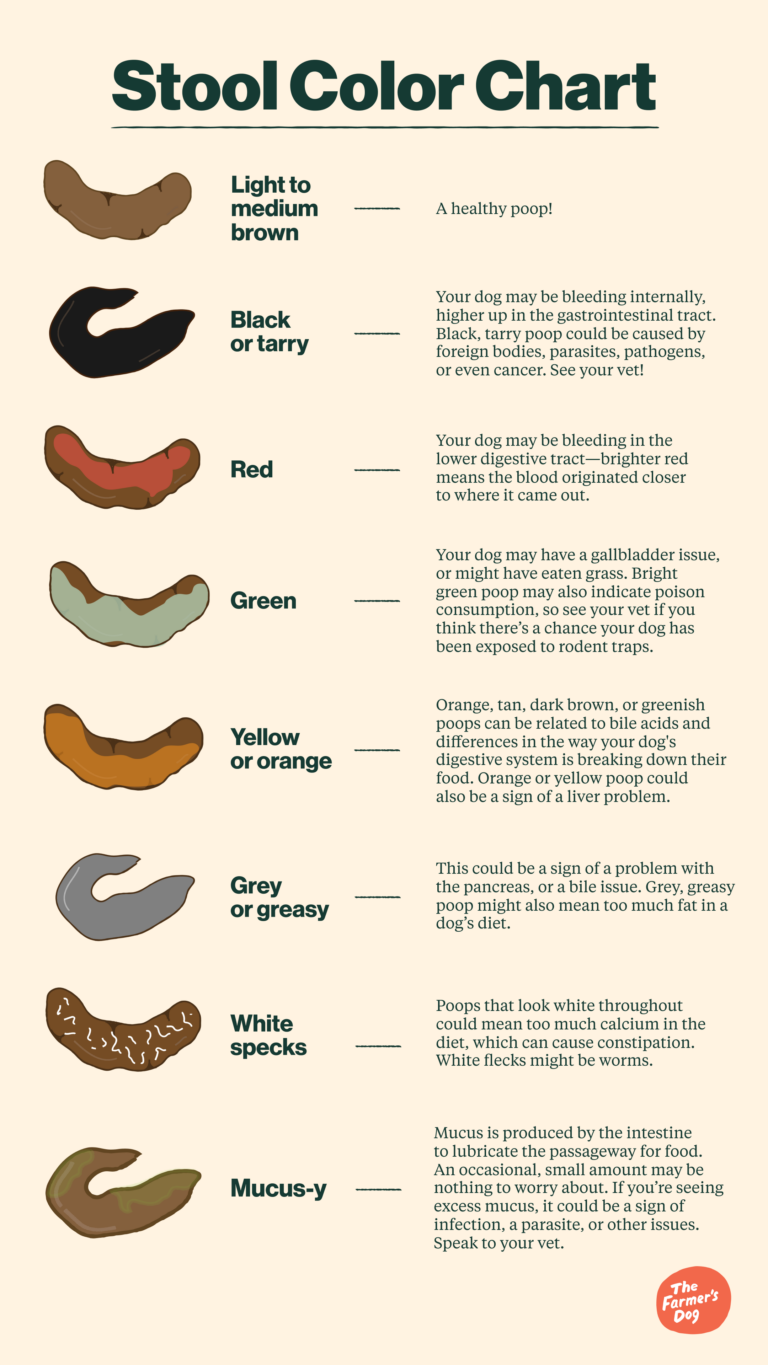The sight of blood in your dog’s poop can be scary. But, while you should definitely take action and look into the situation, there’s no need to panic. No matter what, talk to your veterinarian and get their advice about what to do. In the meantime, here is what some different types of blood in your dog’s stool might mean.
Bright red blood in your dog’s poop
If you see a small amount of bright red blood in your dog’s poop, and it only happens once, there may not be a serious issue. However, if you see a large amount of red blood or it happens more than once, you should talk to your veterinarian. This could be caused by an infection, gastroenteritis, or another condition that requires treatment. Injuries, parasites, and exposure to toxins can also cause bright red blood in a dog’s stool.
Bright red blood and mucus in your dog’s poop
If you see bright red blood with mucus, again, one time may not be a big deal. Mucus occurs naturally in the lining of dogs’ intestines, keeping them lubricated. But if there’s a large quantity of blood and mucus, or if they keep appearing, you should consult a vet.
Bright red blood and mucus may appear in a dog’s stool due to colitis, a parasitic infection, a dietary indiscretion, a too-rapid change in diet, an adverse food reaction, or an inflammatory disorder. Any of these would call for a visit to the veterinarian.
Black or tarry blood in your dog’s poop
Stool that looks black or tarry could be a sign of a serious problem. Darker blood like this could have come from higher up in the digestive tract and changed color as it was digested. Among the possible causes of black dog poop are cancer, kidney failure, pancreatitis, foreign bodies, ulcers, parasites, reactions to certain medications, and viral or bacterial pathogens—if you see black or tarry poop, even once, call your veterinarian and have your dog examined.
What to do if there’s blood in your dog’s stool
The first thing you should do if you see blood in your dog’s stool is call your vet, who can dispense advice and tell you when you might need to bring your dog in for an examination. You can also collect a sample of your dog’s stool in case your vet wants to test it for parasites. But, while you should bring a sample if you can, you should not delay your vet visit because you don’t have one.
A vet will be best qualified to diagnose your dog, but: if you just see one streak of bright red blood and your dog seems normal otherwise, there’s a better chance that nothing is seriously wrong. If you see more or darker blood, on the other hand—or if the blood appears in conjunction with other signs of illness like loss of appetite, diarrhea, weakness, or trouble breathing—there’s a greater chance that the situation is urgent.










